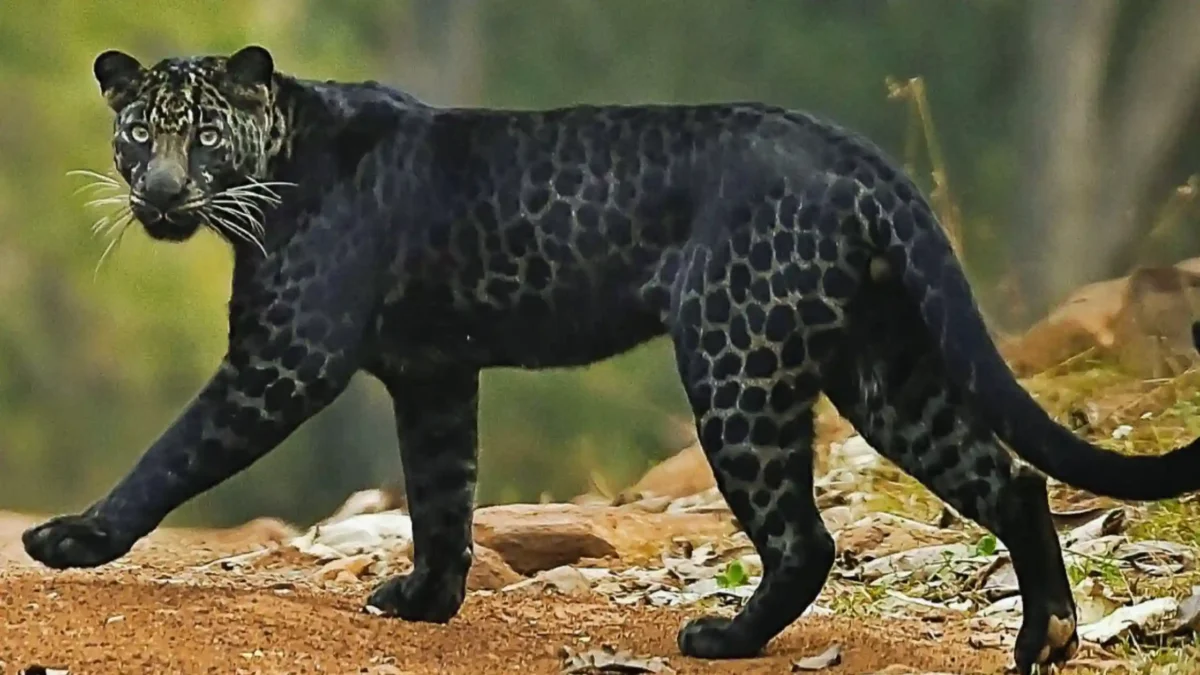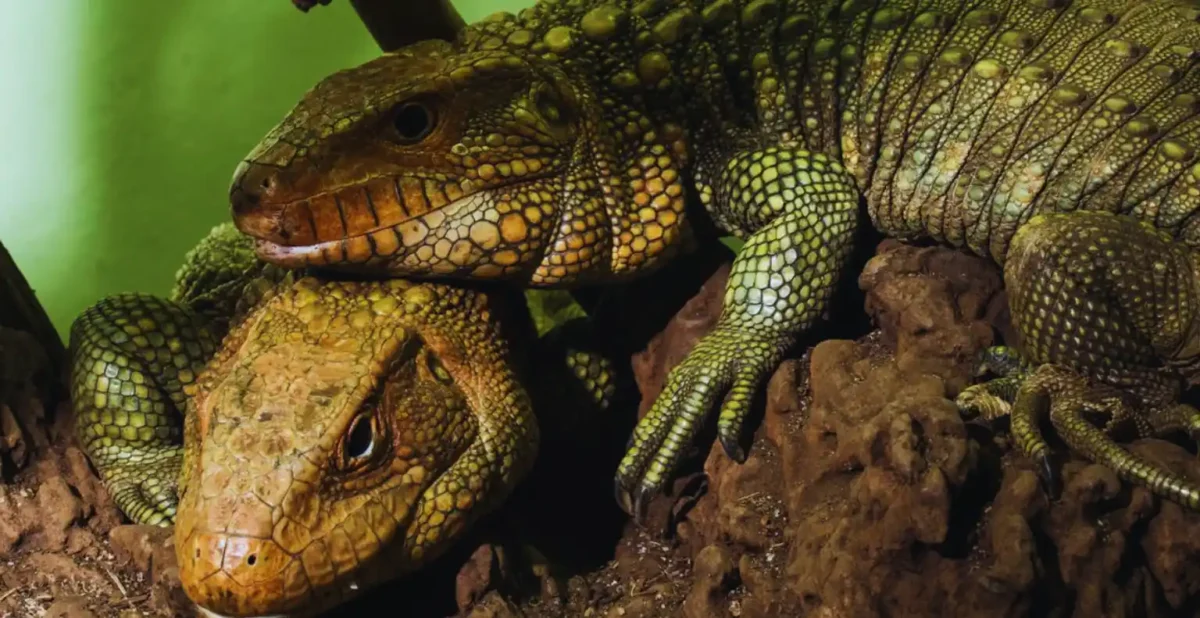The most famous inhabitants of Gir National Park, which is tucked away in Gujarat, India’s Saurashtra area, are its Asiatic lions. But these magnificent big cats are not the only residents of this expansive refuge. Gir is a biodiversity treasure trove with a diverse range of species that appeals to nature lovers and wildlife photographers. Beyond the roar of the lion, Gir National Park offers a varied tapestry of animal experiences. From elusive leopards to beautiful deer and vibrant bird species.
The Leopard: The Stealthy Shadow
Although the Asiatic lion is the main draw at Gir National Park, the leopard is a strong and secretive inhabitant who frequently avoids the spotlight. Leopards are solitary, elusive predators that are well-known for their amazing flexibility and camouflage. For those who are lucky enough to spot them, their rosette-patterned coats provide a striking yet satisfying sight. They blend in with the park’s thick greenery and rocky outcrops.

Gir’s leopard population is largely nocturnal, which contributes to their allure. Early morning or late afternoon safaris give you a better opportunity to see these stunning cats emerging from their secret hideouts. Because of their exceptional climbing skills, leopards frequently perch on rocky ledges or tree branches from which they can see their surroundings. Additionally, they are opportunistic feeders. They take advantage of a wide range of prey, such as tiny to medium-sized mammals, birds, and reptiles.
The Deer Population: Graceful and Abundant
Numerous deer species can be found in Gir National Park, and they all contribute to the park’s rich environment. The Sambar deer and the Chital (spotted deer) are two of the most famous.

The Spotted Deer, Chital
One of the deer species that are most frequently spotted in Gir is the chital or spotted deer. The beautiful and nimble Chital, with its characteristic white markings against a reddish-brown coat, is a species that flourishes in the park’s various ecosystems. You frequently observe these deer in herds as they browse on bushes and graze on the park’s verdant grasslands. Large populations of Chital provide a vital food source for lions and leopards, hence sustaining the predator-prey dynamics in the park.
Sambar Deer
Compared to the Chital, the Sambar deer, another common resident of Gir, is bigger and darker. The Sambar, with its strong frame and unique antlers, prefers to roam the park’s hills and deeper woodlands. It is a shy, evasive animal that is frequently spotted close to water sources. A wide range of plants, including leaves, fruits, and tender shoots, are part of the Sambar’s diet. Its presence supports the food chain and environment, maintaining Gir’s ecological equilibrium.
The Rich Avian Diversity: A Birdwatcher’s Paradise
Gir National Park is a birdwatcher’s paradise, with over 300 species of birds identified within its limits. The park’s varied ecosystems, which include grasslands, woodlands, and bodies of water, offer a variety of settings for different bird species. Among the noteworthy birds that may be seen in Gir are the following ones:

The Indian Peafowl
In Gir, the Indian Peafowl, sometimes known as the peacock, is one of the most magnificent birds. The peacock, known for its extravagant courtship displays and brilliant plumage, is a visual treat. With their long, bright tail feathers decorated with designs like eyes, males stand out particularly. These birds are recognized for their booming calls, which reverberate throughout the park and are frequently spotted in open spaces.
The Eurasian Spoonbill
Gir’s marshes and water bodies are home to the unique wader bird known as the Eurasian Spoonbill. You can easily recognize it by its brilliant white plumage and spoon-shaped bill. Spoonbills use their bill to filter through the water as they hunt for tiny fish and aquatic invertebrates. A glimpse of the great avian diversity of the park can be obtained by watching these species in their natural environment.
Lesser Adjutant Stork
Gir is home to another amazing kind of bird, the Lesser Adjutant Stork. Its huge stature, dark plumage, and characteristic yellowish neck define this giant stork. Lesser Adjutants usually inhabit areas close to water sources, where they consume insects, fish, and amphibians for food. Their existence emphasizes Gir’s wetlands’ significance to the environment.
The Reptilian Residents: Lizards and Snakes
An array of reptiles further enhances the biodiversity of Gir National Park. Numerous lizard and snake species can be found among the reptiles, and each is important to the ecosystem of the park.

Indian Rock Python
In Gir, the Indian Rock Python is one of the biggest snakes. This non-venomous constrictor is exceptionally large and powerful. You can find rock pythons in several types of habitats, including grasslands and woods. Their main food sources include reptiles, birds, and mammals. Identifying a rock python requires careful attention since they skillfully camouflage themselves into their environment.
Monitor Lizards
Reptiles that are common in Gir include monitor lizards, such as the Bengal monitor. Also, People distinguish these lizards by their length, strength of limb, and tail length. They can frequently be observed eating or lounging in the sun. Because they are omnivores, monitor lizards consume carrion, small animals, and insects.
Conservation Efforts and Biodiversity
The unique wildlife of Gir National Park captivates visitors, and diligent conservation efforts have preserved it, yielding a great variety. Moreover, the management of the park is concentrated on research, habitat restoration, and the enforcement of anti-poaching policies. These initiatives guarantee the survival of the wide range of other species that make Gir home, in addition to the Asiatic lions.
Programs for education and awareness are also essential for advancing conservation. Furthermore, Gir National Park cultivates a deeper appreciation for its animals and promotes sustainable practices that benefit the local community and the ecosystem by involving local communities and tourists.
Beyond the well-known Asiatic lions, Gir National Park provides a multitude of wildlife encounters. Due to this there are countless opportunities for exploration and discovery in the park’s rich environment, which includes fascinating reptiles, lively wildlife, and secretive leopards in addition to elegant deer. The abundant biodiversity of Gir National Park ensures a fantastic experience for anyone who enjoys nature, be they a wildlife fanatic, birdwatcher, or just a nature lover. While organising your trip to this amazing sanctuary, remember to enjoy the diversity of animals that contribute to its rich ecological diversity. From tiny birds to mighty predators, every creature in Gir National Park is an essential part of the complex ecosystem, which is what makes this park a genuine treasure of India’s natural history.
Read Also:
- 11 Best Places to Visit in Monsoon in Gujarat
- Nature Lover’s Guidance: Beautiful Places to Visit in Gujarat Near Ahmedabad
- Adventure and Serenity: Gujarat Tourist Attractions for Every Type of Traveler
Hey there! I’m Santu Chakraborty and I’m not your typical traveler. By day, I wrangle circuits and solve electrical mysteries as an engineer, but my true passion lies in exploring the world and sharing those experiences with you. For the past five years, this blog has been my canvas, where I paint stories of adventure, practical travel tips, and cultural insights to ignite your wanderlust. So, come join me on my journeys and discover the magic that awaits just beyond the horizon!





